With the charming name of SDSS J0146-0929, this is a galaxy cluster — a monstrous collection of hundreds of galaxies all shackled together in the unyielding grip of gravity. The mass of this galaxy cluster is large enough to severely distort the space-time around it, creating the odd, looping curves that almost encircle the center of the cluster. Credit: ESA/Hubble & NASA, S. Jha, Acknowledgement: L. Shatz
Hubble Snapshot of ‘Molten Ring’ Galaxy Prompts New Research
The Hubble Space Telescope’s glamour shots of the universe nearly always have a discovery behind them.
In this image, a remote galaxy is greatly magnified and distorted by the effects of gravitationally warped space. After its public release, astronomers used the picture to measure the galaxy’s distance of 9.4 billion light-years. This places the galaxy at the peak epoch of star formation in cosmic evolution.
In this particular snapshot, a science discovery followed the release of a Hubble observation of a striking example of a deep-space optical phenomenon dubbed an “Einstein ring.” The photo was released in December 2020 as an example of one of the largest, nearly complete Einstein rings ever seen.
?A vivid aurora streams over the Earth as the International Space Station orbited 274 miles above the southern Indian Ocean. Credit: NASA
Behold an Aurora Over the Southern Skies
A vivid aurora streams over the Earth as the International Space Station orbits 274 miles above the southern Indian Ocean in between Australia and Antarctica.
The station orbits the Earth in about 90 minutes. In 24 hours, the space station makes 16 orbits of Earth, traveling through 16 sunrises and sunsets.
Concept for a set of future robots working together to ferry back samples from the surface of Mars collected by the Mars Perseverance rover. Credit: NASA/ESA/JPL-Caltech
Mars Sample Return Artist’s Concept
This illustration shows a concept for a set of future robots working together to ferry back samples from the surface of Mars collected by NASA’s Mars Perseverance rover.
NASA and the European Space Agency (ESA) are solidifying concepts for a Mars sample return mission that would seek to take the samples of Martian rocks and other materials being collected and stored in sealed tubes by NASA’s Mars Perseverance rover and return the sealed tubes to Earth.
According to the current concept, NASA would deliver a Mars lander in the vicinity of Jezero Crater, where Perseverance (left) will have collected and cached samples. The Sample Retrieval Lander (right) would carry a NASA rocket (the Mars Ascent Vehicle), along with ESA’s Sample Fetch Rover (center) that is roughly the size of the Opportunity Mars rover. The fetch rover would gather the cached samples and carry them back to the lander for transfer to the ascent vehicle; additional samples could also be delivered directly by Perseverance. The ascent vehicle would then launch a special container holding the samples into Mars orbit. ESA would put a spacecraft in orbit around Mars before the ascent vehicle launches. This spacecraft would rendezvous with and capture the orbiting samples before returning them to Earth. NASA would provide the capture and containment payload module for the orbiter.
With the Lucy spacecraft aboard, a United Launch Alliance Atlas V rocket is seen as it is rolled out of the Vertical Integration Facility. Credit: NASA/Bill Ingalls
Lucy Mission Set to Launch to Study Trojan Asteroids
With the Lucy spacecraft aboard, a United Launch Alliance Atlas V rocket is seen as it is rolled out of the Vertical Integration Facility to the launch pad at Space Launch Complex 41, Thursday, October 14, 2021, at Cape Canaveral Space Force Station in Florida. Lucy will be the first spacecraft to study Jupiter’s Trojan asteroids. Like the mission’s namesake – the fossilized human ancestor, “Lucy,” whose skeleton provided unique insight into humanity’s evolution – Lucy will revolutionize our knowledge of planetary origins and the formation of the solar system.
The Lucy mission launched at 5:34 a.m. EDT on October 16, 2021, on a United Launch Alliance (ULA) Atlas V rocket from Space Launch Complex 41 at Cape Canaveral Space Force Station in Florida.
Illustration of the Lucy mission’s seven targets: the binary asteroid Patroclus/Menoetius, Eurybates, Orus, Leucus, Polymele, and the main belt asteroid DonaldJohanson. Credits: NASA’s Goddard Space Flight Center Conceptual Image Lab
Lucy: Inspiration and Asteroids
NASA’s Lucy mission will explore a record-breaking number of asteroids, flying by one asteroid in the solar system’s main asteroid belt, and by seven Trojan asteroids.
This illustration is of the Lucy mission’s seven targets: the binary asteroid Patroclus/Menoetius, Eurybates, Orus, Leucus, Polymele, and the main belt asteroid DonaldJohanson.
Like Monsters in the Sky
A violent and chaotic-looking mass of gas and dust is seen in this Hubble Space Telescope image of a nearby supernova remnant. Denoted N 63A, the object is the remains of a massive star that exploded, spewing its gaseous layers out into an already turbulent region.
The supernova remnant is part of a star-forming region in the Large Magellanic Cloud (LMC), an irregular galaxy 160,000 light-years from our own Milky Way.
Supernova remnants have long been thought to set off episodes of star formation when their expanding shock encounters nearby gas. N 63A is still young, and its ruthless shocks are destroying the ambient gas clouds, rather than coercing them to collapse and form stars.

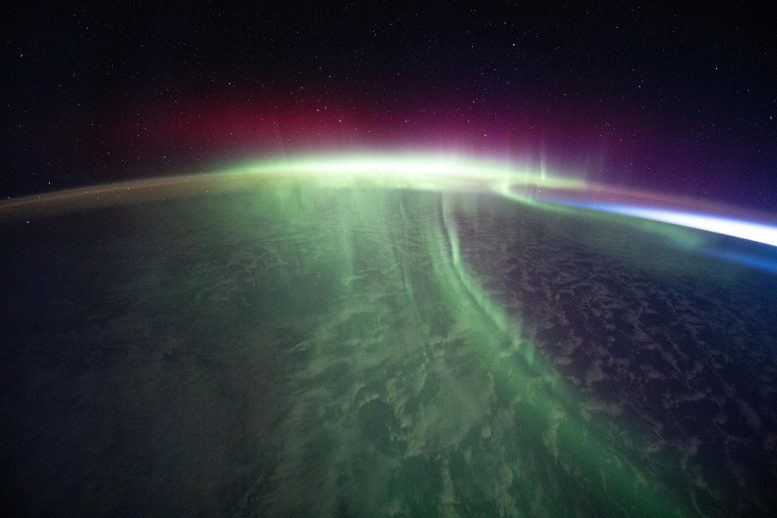
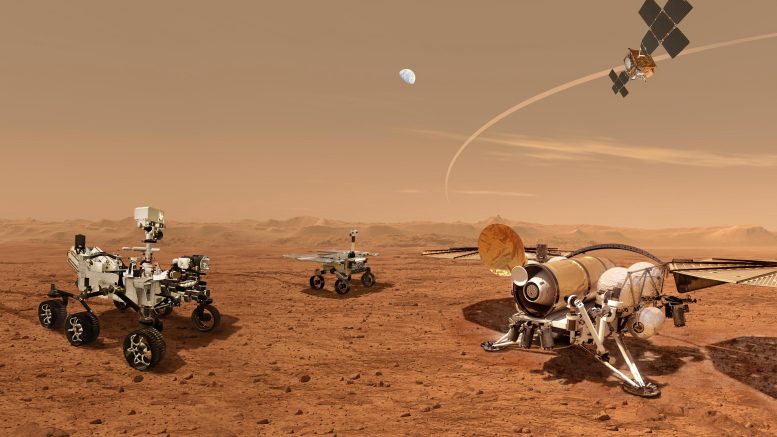
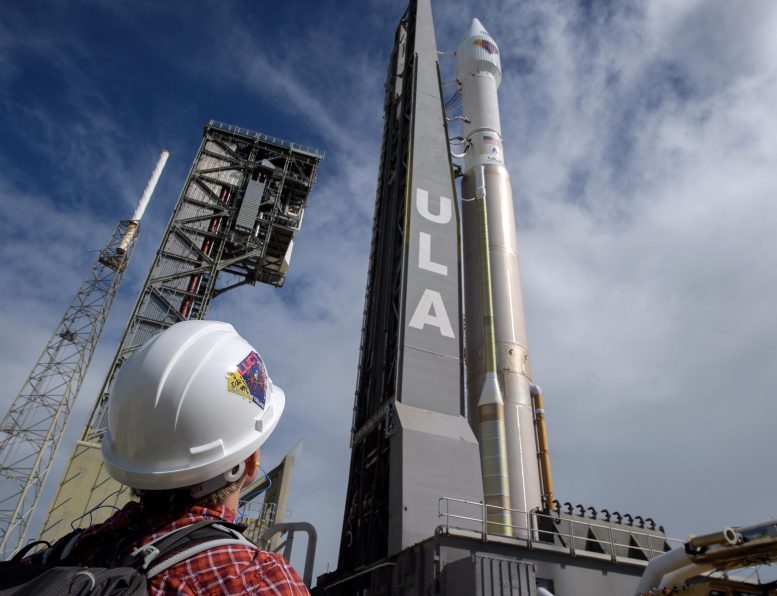
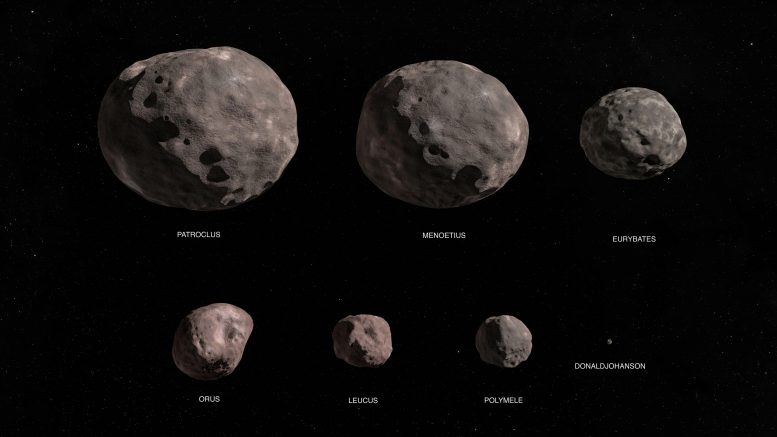
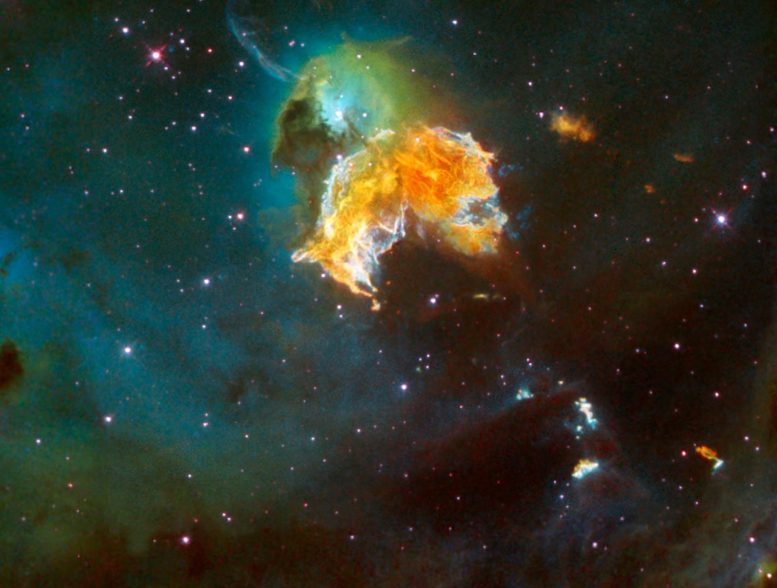


No comments:
Post a Comment